“Social Justice and the Marginalized in South India: Experiences and Challenges” – National seminar held at C. S. R. Sarma College, Ongole on July 30th and 31st, 2016.

Registration – K. Shanmugam, Venkareswara Rao
The National seminar: The department of History organized a National Seminar on “Social Justice and the Marginalized in South India: Experiences and Challenges” held on 30-31 July 2016 at the premises of C.S.R.Sarma College, Ongole[1]. The national seminar was sponsored by the ICHR, New Delhi. Dr K. Srinivasulu, the convener of the seminar in the circular clearly brought out the theme of the seminar and the related subthemes. The last dates for the submission of abstract and full papers were fixed as July 20th 2016 and July 25th and about 50 papers were received by them. The delegates from outstation started coming by July 29th evening itself and they were taken to different lodges and accommodated immediately. Paper presenters had come from New Delhi, Andhraparadesh, Telengana, Karnataka, Kerala, Tamilnadu, Pondicherry and other parts of India. For me, this was the fifth visit to attend seminar or conference. Anyway, it gives me opportunity to meet friends, listen to scholars and learn new facts.

The Theme of the Seminar[2]: The circular explained the theme of the seminar in detail, “In the onward progress of human history, we did imagibe a society of free of oppression, just and egalitarian. Just was conceived as ‘right’, often became a tool to examine the proper functioning of the society. Law, government, governance, administration, political processes, reconciliation, and negotiation viewed from the perspective of justice. It became a norm and also necessity of everyday life. However notions of justice vary from one to another. Governmental to popular notion of justice reflect the significance, though we might divide over its proper definition. From attainment of dignity, corrective, retributive, distributive to redress of historic injustice highlights the journey of justice. These forms of understanding on idea of justice have responded to different situations from Plato to Rawls and recently Amartya Sen and Naila Kabir.”

What is social justice?: The circular went on to explain, “Social justice emerges with the notion to address the inequalities present in different realm of life influenced by social conditions. It aspires to bring parity through the principle of distribution in wealth, asset, benefit and opportunities. Social justice was argued from the perspective of merit, needs, equality and absence of privileges. In order to create a just and fair social space, certain member of society needs to share the traditional and historical privileges. As Dr. Ambedkar rightly mentioned in his last constituent assembly speech, that political equality means nothing unless social and economic equality is guaranteed. Social justice attempts to engage with economic and social injustice present in the society. It is often viewed as right of the destitute, women, minorities and empowers the marginalised members of the society. Rawls mentions, the availability of primary goods to the least favoured is necessary. He further states that liberty, equality and opportunities are essential to promote the values of social justice.”

Indira Sawhney – Mandal jugment was diluted for vote bank politics
Social justice, Hindus, Ambedkar: The circular also pointed out, “In India the idea of social justice everyday challenged by the unequal social order defined by caste identity of members in society. The understanding on justice in India was performing caste duty that is observance of enforcement of Hindu law which Ambedkar says Hindu laws are made by touchables in order to create an order. Untouchables have to obey it, they do not have any right and no justice is due to them. They should pray for mercy and favour from the touchables. This established order is not notional but legal and also subject to punishment. Therefore, one could argue that justice in ancient India was based on hierarchy over equality, importance to traditional rights and duties. Dr. Ambedkar while writing on different aspects of socio-political economic and religious matters adopted justice as a framework for establishing a vibrant democracy in India. His writings and speeches do not systematically discuss the concept of social justice rather his understanding on liberty, equality and fraternity, social democracy, state and minorities brings the periphery idea of social justice to the forefront.”

Mandal SC judgement- key words- before and after
Statistics of the SCs etc[3]: The circular erred in giving statistics, “The SC’s who according to the 2011 census comprised of 16.6 percent and scheduled tribe who are popularly known as Advasis, Mulnivasi, constitute 8.6 percent, 16 percent minorities, especially Muslims, of total population face continuous negligence from the state and discriminated on daily basis by the society. Similarly women who constitute 49 percent of our population exist with mere economic, health, educational, employment opportunities. These marginalized communities not only lack basic amenities towards well being but also encounter constant violence by the dominant communities. Social Justice addresses and advocates guarantee of rights for the marginalized, moreover questions everyday oppression.”

Madhu, KS and KVR

Laboratory hall donated by Smt Bhanumathi Ramakrishna
Questions raised for discussion and debate: The circular also posed questions, “South India, without much doubt performing well on different socio-economic and educational index compared to other regions of the country. The presence of social movement ensured better opportunities for the marginalized and championed the idea of social justice. In this context, –
- how do we understand the idea of social justice?
- What does it mean to Indian society?
- How it promises to address the existing challenges faced by marginalized communities such as Dalits, Tribals, Women and Minorities present in our society?
- Can it deliver its promises and if so how it’s going to do so?
- Is that easy to implement the principles of social justice against odd conditions?
The proposed seminar on ‘Social Justice and Marginalized in South India: Experience and Challenges’ would respond to some of these important questions. Different thematic sessions on social justice and marginalized communities engage with the emergence of social justice to the challenges posed in the contemporary times.”

K. Shanmugam facilitated, who inaugurated the seminar

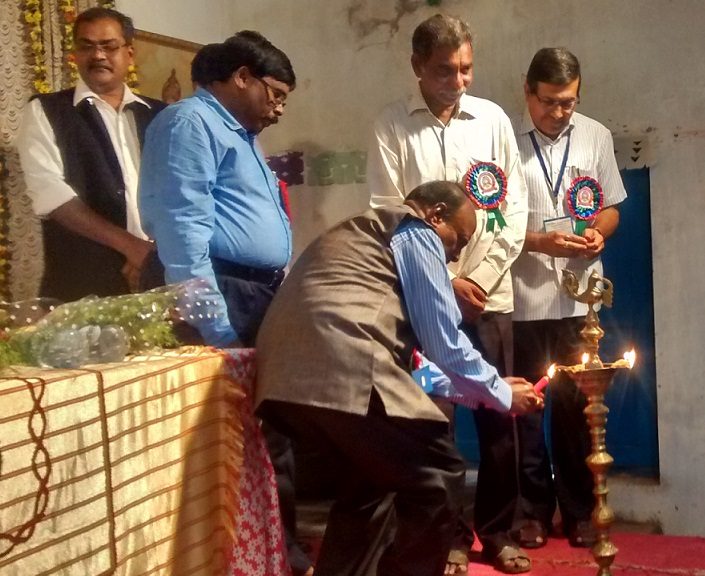
KS lighting the lamp

Seminar inaugurated – invocation – Vande mataram

The Sub- Themes suggested for the seminar: For paper presenrers, the following sub-themes were also suggested:
- The Idea & Origin of the Concept of Social Justice
- Social Justice in Ancient and Medieval South India
- Social Justice and Marginalized Communities
- Social Movements and Social Change in South India
- Social Justice: Understanding Policies and Politics
- Any other Topic related to the Theme

View of te audience 30-07-2016.LHS

View of the audience 30-07-2016
30-07-2016 (Saturday) – Inauguration: The seminar was inaugurated by the invited dignitaries and scholars by 10.30 am on July 30th 2016 with routines of lighting the lamp, inviting the delegates, honouring the guests etc.
11.17 to 11.20 am: Dr K. Srinivasulu explained about the theme of the seminar.
11.21 to 11.48 am: Sri K. Shanmugam, Assistant Commissioner of Central Excise, Chennai inagurated the seminar with a brief.
11.49 to 11.50 am: Sri G. V. Ramakrishna Rao, Director, Department of Archaeology and Museums, Govt. of A.P as a Chief Guest succintly touched upon the issues of “Social Justice”.
11.51 to 12.30 pm: Associate Prof Yagati Chinna Rao[4], Programme for the Study of Discrimination and Exclusion, Jawaharlal Hehru University delivered key-note address.
12.31 to 12.37: Sri M. Srinivasa Rao, the Principal of the college presided over the function and addressed the gathering.
Sri P. Gopalakrishna Murthy gave “Vote of thanks” to all. These went on as routine and ritual like.

Time for sub-quota for deprived SC sub-castes[5]: As “The Hindu” reported about the speech of Yahati Chinna Rao, it is given here. Y. Chinna Rao started explaining how the concept and expression “Social justice” developed out of western sources in the modern context. According to him there was a need for a review of the scheme of reservation to assess as to which of the sub-castes in the list of the Scheduled Castes benefited the most and a sub-quota provided in favour of the most deprived Dalit communities[6]. Referring to Andhra Pradesh, he said Malas and Madigas, the two main Dalit communities, were relatively advanced when compared to the sub-castes like Dekkalis, Mala Mastins, Madiga Mastins and Mala Asadis who were marginalised. A sub-quota on the lines of the one provided for Arunthathiyars in Tamil Nadu could be evolved to improve the lot of the deprived Dalit groups, who should be entitled to a mandatory sub-quota of 3 per cent or so and also claim their share in the general quota for SCs, he opined[7]. A commission should be constituted to find out which groups had not benefited at all from the Scheduled Caste quota and these should be given top priority within the quota for SCs, he added. Experiences showed that the benefits of reservation went only to a few well-educated families in the politically-dominant SC communities and real poor SC families were left out of the development process, Mr. Rao said.

Benefits of reservation went only to a few well-educated families in the politically-dominant SC communities and real poor SC families were left out: If this is true, it is very serious and why the SCs opporess and supress their own brethren has to be analyzed. Generally, the SC leaders always make hue and cry about the status of SC all ober India. In AP, it is learnt that SC political leaders have set up political colleges, but, they do not give seats to SC, as they cannot give any donation. Then, why they pose as saviours of SC and gain political clout for their selfishness and profiteering. Whether such learned, advanced and politically dominant elite SCs could be considered as “creamy layer” and the reservation stopped for their wards has also to be considered for debate. How “Reservation within reservation” could be achieved, benefited and implemented for them has to be explained.

Technical session on the first day (30-07-2016): Technical session started immediately by 12.38 pm. The first session was headed by Dr G. Sambasiva Reddy. After lunch, the session was chaired by Prof Lokesh, Dharwad, Karnataka. The third session was conducted by Dr S. Jayakumar, Alapuzzha, Kerala. The technical session started with the presentation of papers. Generally, the papers had dealt with the subject matter specifically in the context. Few papers were presented in Telugu, of course dealing with the local issues. Unlike, other social justice conferences, where, emphasis is given to job reservation related issues, here, many other issues like the rights of children, women, old people etc., were touched upon. Even Supreme Court judgments, the special bench for “Social Justice” and their fast-track way of deciding the issues were also taken up for discussion.

Technical session on the second day 31-07-2015 (Sunday): The paper reading session started by 9.50 am and the session was chaired by Dr Jawaharlal. The second session was headed by Dr Raja Mohan Rao. State Archaeology and Museums Deputy Director Sai Baktha Keshava, Dr. K Thimma Reddy, a retired professor from Andhra University, former Union Public Service Commission member K.S.Chalam and Dr.G. Sambasiva Reddy from Yogi Vemana University were among those who spoke at the seminar which saw presentation of 50 research papers on issues relating to discrimination and exclusion of Dalits by scholars from different parts of the country.

Second session – G. Dharma Naik, P. Sumabala, D. Jayachandralekha, Madhusudhana Rao
The discussion about “tribe”, “tribal”, “criminal tribe” etc: Some papers delved upon the “tribes” of India. A tribe is understood generally as a group of distinct people, dependent on their forest, land or place, where they live for their livelihood. According to the present-day researchers, they have been primitive, barbarians and uncivilized. They have been considered largely self-sufficient, and not integrated into the national society. However, in India, they have been associated with other people and following national culture, tradition, heritage and civilization as could be noted from their counterparts. One would be surprised to see the jewelry of them exhibited in the so-called “tribal” museum in Pune, as they excel modern jewelry in intricacy, design and manufacture. In other words, their material culture had / has been for better than modern culture.  In India only, the British brought certain acts to segregate and brand certain tribes as “criminal”, as they did not obey to them by force or otherwise. The term Criminal Tribes Act (CTA) applies to various pieces of legislation enforced in India during British rule; the first enacted in 1871 as the Criminal Tribes Act, 1871 applied mostly in North India. The Act was extended to Bengal Presidency and other areas in 1876, and, finally, with the Criminal Tribes Act, 1911, it was extended to Madras Presidency as well. The Act went through several amendments in the next decade and, finally, the Criminal Tribes Act, 1924 incorporated all of them.
In India only, the British brought certain acts to segregate and brand certain tribes as “criminal”, as they did not obey to them by force or otherwise. The term Criminal Tribes Act (CTA) applies to various pieces of legislation enforced in India during British rule; the first enacted in 1871 as the Criminal Tribes Act, 1871 applied mostly in North India. The Act was extended to Bengal Presidency and other areas in 1876, and, finally, with the Criminal Tribes Act, 1911, it was extended to Madras Presidency as well. The Act went through several amendments in the next decade and, finally, the Criminal Tribes Act, 1924 incorporated all of them.

The Indian tribes have been scientifically advanced society: Actually, in India, people have been living in every part of Bharath contributing their mite to the society. The ancient Indian literature (from Vedas to Puranas) has been vivid with their contribution and the integrated role played in many aspects. In fact, most of the metallurgical technology was vested with them and the European travellers, explorers and missionaries have recorded in their writings[8]. In ferrous technology, they had excelled long back and the specimens they produced even in 17th-18th centuries could not have been produced by the European experts[9]. Most of the metallurgical processes, techniques and science were observed and learned from them[10]. However, many times, the European Companies tried to exploit them and even steal their technology and kill them. This infuriated them and started retaliating against them. At that stage only, to suppress the facts, they branded them as thugs, hooligans, gangsters, criminals and so on. Officially, they enacted acts and rules to prevent from carrying out their skills. Thus, the paper presenters have been perplexed and confused in recommending that they should be modernized at one side and at the same time, advocating that their culture, tradition, heritage and civilization should be preserved!

criminal tribes of Indiam Hubli etc, as imagined by the British

Valedictory and the retirement function of Dr K. Srinivasulu: After lunch, the valedictory function was there. Then, the outstation delegates started moving out. After that a function was held to facilitate Dr K. Srinivasulu, as he was retiring by the day. His relatives, friends, colleges and well-wishers were there to wish him retired life and carry on his research activities.
K. V. Ramakrishna Rao
15-08-2016.
[1] C.S.R.Sarma College was established in the year 1952 and presently affiliated to Acharya Nagarjuna University, Nagarjuna Nagar, Guntur District, Andhra Pradesh. The College got UGC recognition under 2(f) and 12(b) in the year 1987. The institution is presently offering B.A., B.Com, B.Sc. and M.Sc. courses. The college celebrated its diamond jubilee celebrations in the year 2012. Department of History is one of the earliest departments of the college.
[2] Based on the circular sent to the delegates by the convener of the seminar.
[3] This type of statistics given has been without any mathematical sence or truth, as they do not represent the reality. For example, here –
SC = 16.6%
ST = 8.6%
Muslims and other minorities = 16.0%
Women = 49.0%
Total = 90.2%
Then, the balance 9.8% – who are they? Are they “non-Muslims”, “non-minorities”, “Hindus” or otherwise? Definitely, Hindus are there in SC, ST and women and they cannot be seperated in statistics for convenience. If “marginalized” are there in every community or religion, then, they have to be seperated with facts and figures to arrive at factual position for any interpretation.
[4] Dr. Yagati Chinna Rao, Associate Professor, Programme for the Study of Discrimination and Exclusion, School of Social Sciences, Jawaharlal Nehru University, New Delhi – 110 067. Ph: 011-26704165 (Off); 011-2674 1467 (Res.), Fax: 011 2674 1504/ 2674 1586; Email: ycrao@mail.jnu.ac.in; cryagati@gmail.com For more details, see here: http://www.jnu.ac.in/Faculty/chinnarao/
[5] The Hindu, Time for sub-quota for deprived SC sub-castes: JNU Professor , Ongole, August 1, 2016; Updated: August 1, 2016 06:08 IST
[6] His usage of “Scheduled Castes” and “Dalits” in the same line, context etc., is intriguing, as the National Commission for SC issued a circulr not to use “dalit”, as it is neither constitutional nor legal.
[7] http://www.thehindu.com/news/national/andhra-pradesh/time-for-subquota-for-deprived-sc-subcastes-jnu-professor/article8926220.ece
[8] Works at Ramanakapettah’ and this version is taken from Vol.1 (No.613) of the Board’s Collections in the India Office (IOR:F/4/I). An edited version of it was also published by Dr Heyne in 1814 as No.13 ‘Tracts, Historical and Statistical on India’.
[9] The Mode of Manufacturing Iron in Central India, by Major James Franklin, is in the India Office Library as MS EUR D 154, and is noted as ‘Received from Secretary May 19, 1835’. The whole of this document along with the seven plates (but excluding the map) is published here. The original is titled ‘Observations on Several Iron Mines, in the Central Part of India, with an account of the Indian Mode of Manufacturing Iron and Plans of the Machinery and Implements’.
[10] Aspects of Technology in Western India, consists of extracts from letters addressed from Bombay by Dr H. Scott to Sir Joseph Banks, President of the Royal Society, London, during 1790-1801. The extracts reproduced here are from Add Ms.33979 (ff.1-13; 127-30; 135-6; 233-6); Add Ms.33980 (ff.305-310) and Add Ms.35262 (ff.14-5) in the British Museum.
Filed under: ambedkar, andhra, bonded, brahmin, colonial, colony, conduct, constitution, controversy, culture, dalit, discrimination, Dravida, ethnicity, G. V. Ramakrishna Rao, heritage, historicity, historiography, history, K. Srinivasulu, labour, Mala, marginalized, marxism, methodology, migration, nationality, non-brahmin, non-vegetarian, non-violence, objectivity, oppressed, politics, pollution, SC, social justice, suppressed, tamilnadu, tribal, tribe, uncivilized, vegetarian, woman, women, worker | Tagged: amartya sen, ambedkar, Ariyar, criminal, criminal tribe, dalit, Dravida, Dravidar, egalitarianism, equality, harijan, mandal, marginalized, Naila kabeer, oppressed, race, racialism, racism, reservation, social justice, suppressed, thugs, tribal, tribe, uncivilized, utopia, women | Leave a comment »











































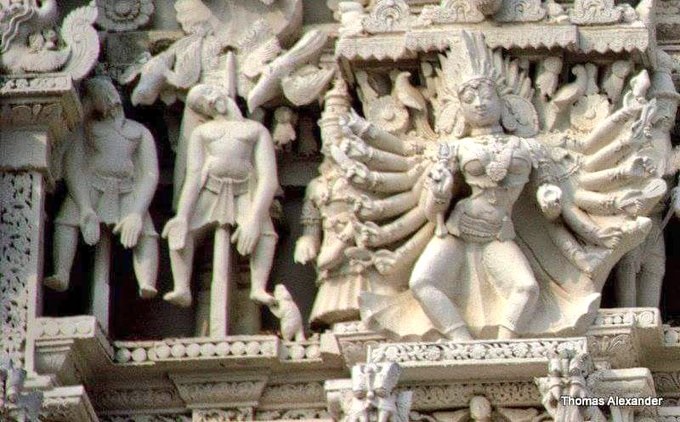







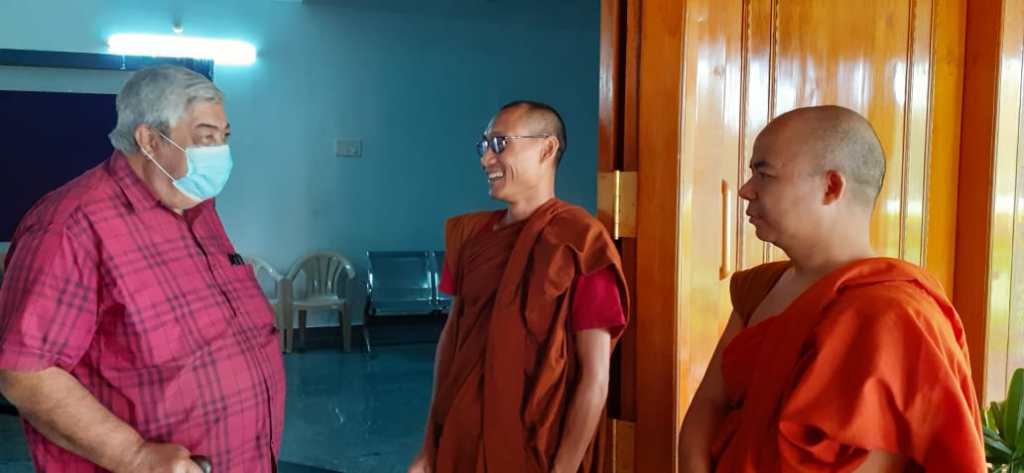









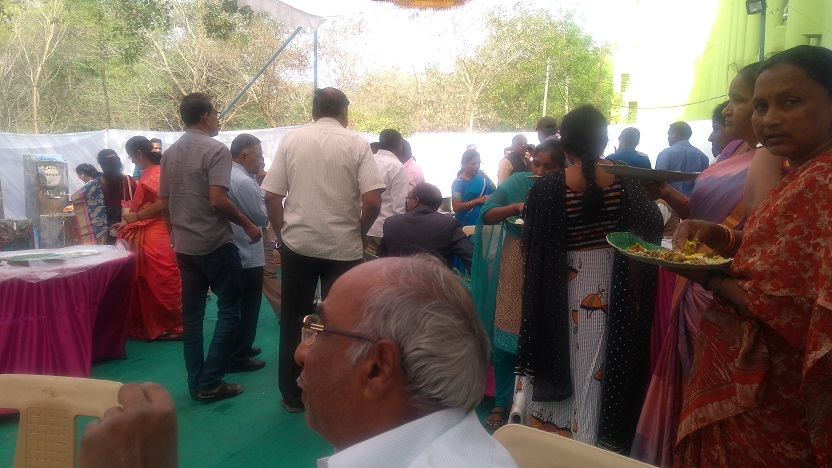









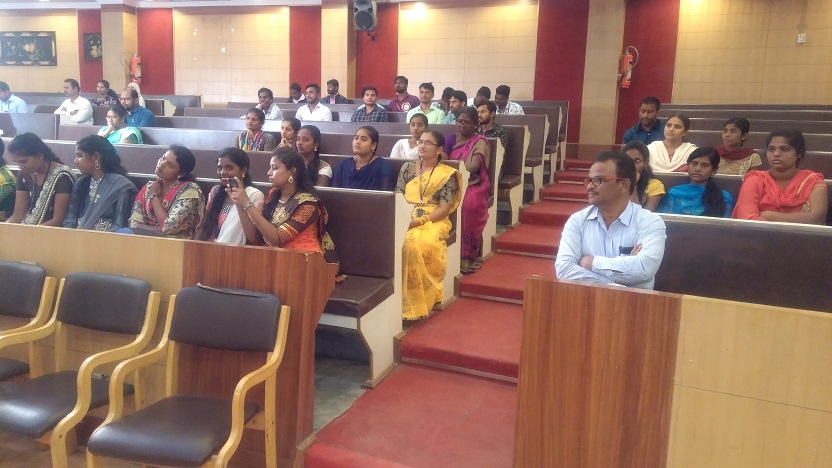





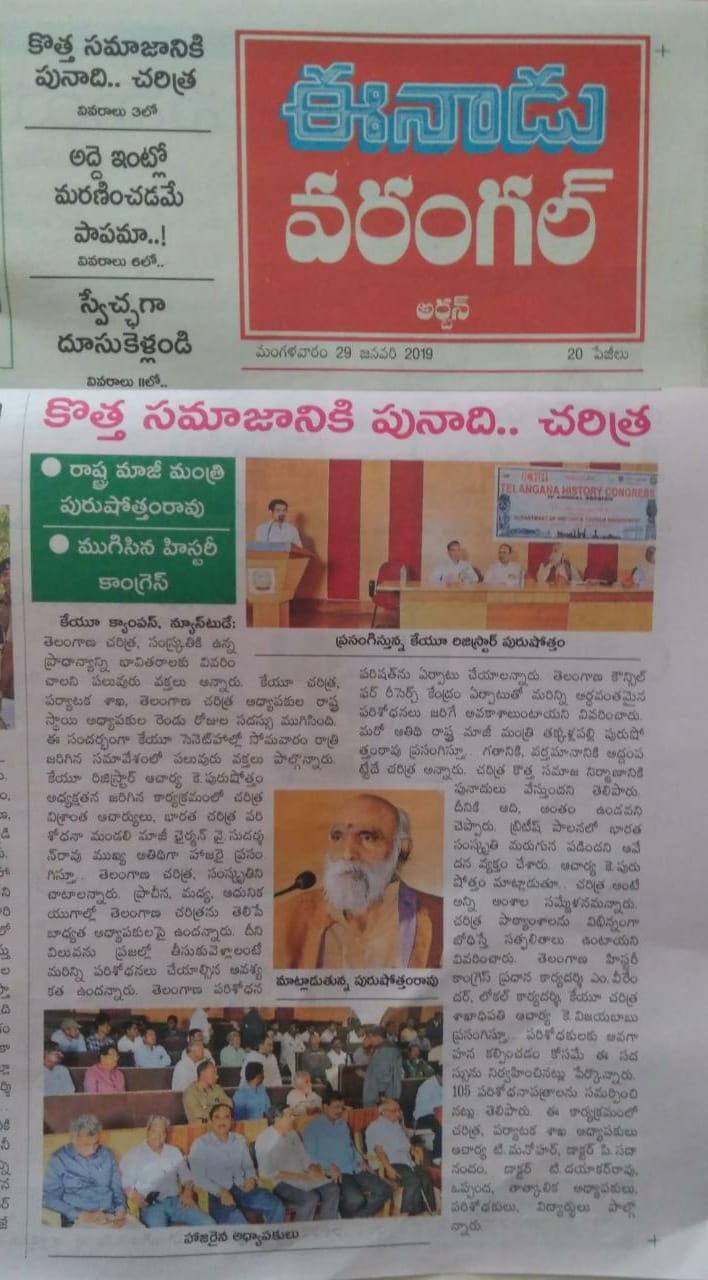



















 In India only, the British brought certain acts to segregate and brand certain tribes as “criminal”, as they did not obey to them by force or otherwise. The term Criminal Tribes Act (CTA) applies to various pieces of legislation enforced in India during British rule; the first enacted in 1871 as the Criminal Tribes Act, 1871 applied mostly in North India. The Act was extended to Bengal Presidency and other areas in 1876, and, finally, with the Criminal Tribes Act, 1911, it was extended to Madras Presidency as well. The Act went through several amendments in the next decade and, finally, the Criminal Tribes Act, 1924 incorporated all of them.
In India only, the British brought certain acts to segregate and brand certain tribes as “criminal”, as they did not obey to them by force or otherwise. The term Criminal Tribes Act (CTA) applies to various pieces of legislation enforced in India during British rule; the first enacted in 1871 as the Criminal Tribes Act, 1871 applied mostly in North India. The Act was extended to Bengal Presidency and other areas in 1876, and, finally, with the Criminal Tribes Act, 1911, it was extended to Madras Presidency as well. The Act went through several amendments in the next decade and, finally, the Criminal Tribes Act, 1924 incorporated all of them.

